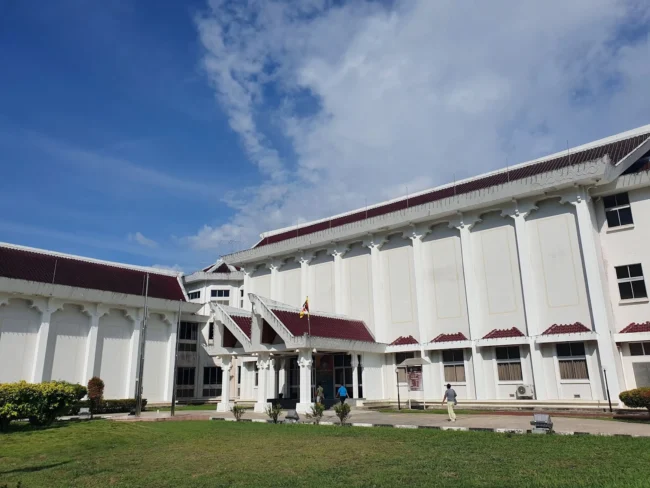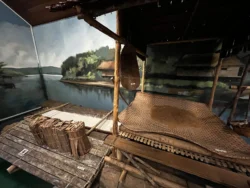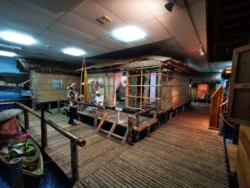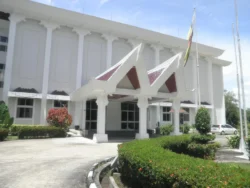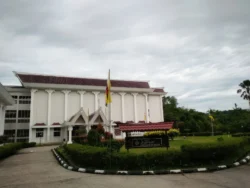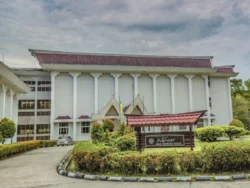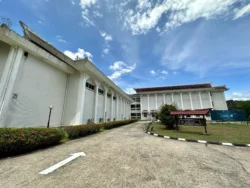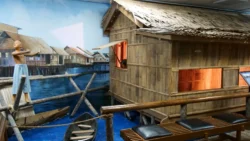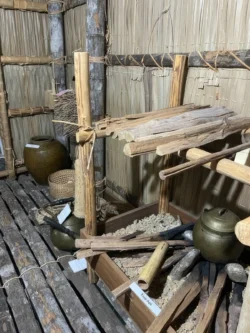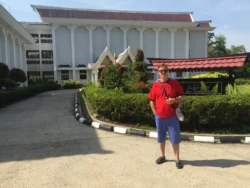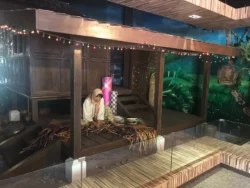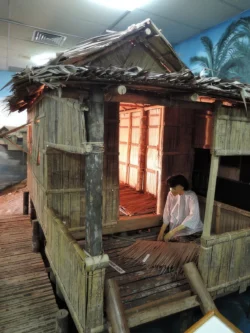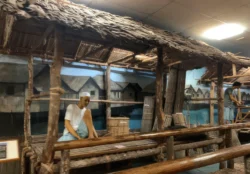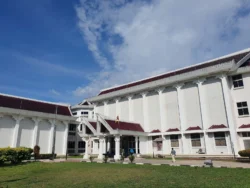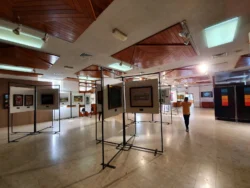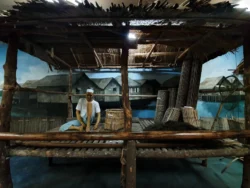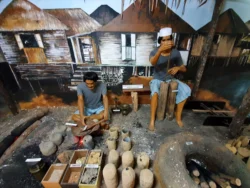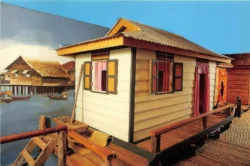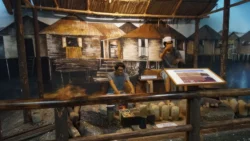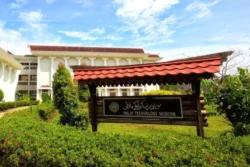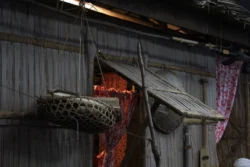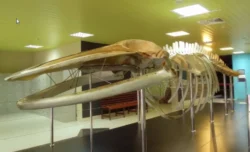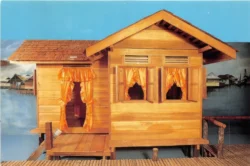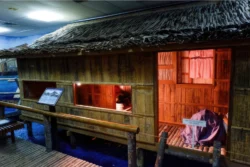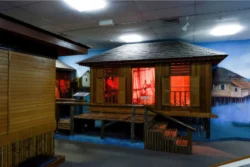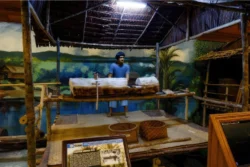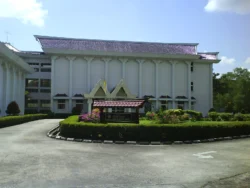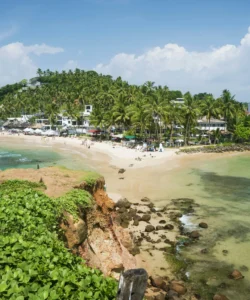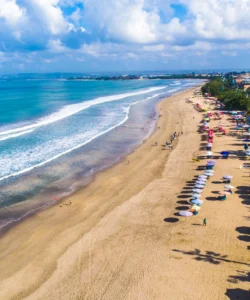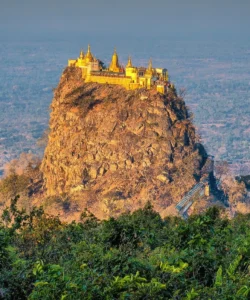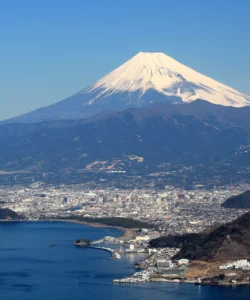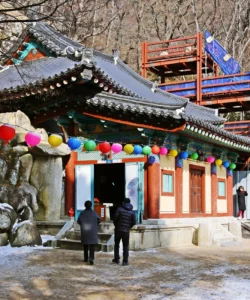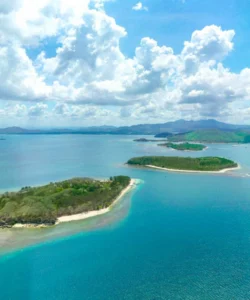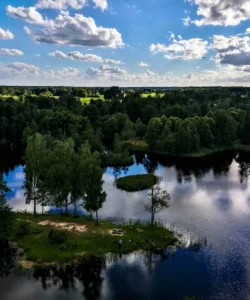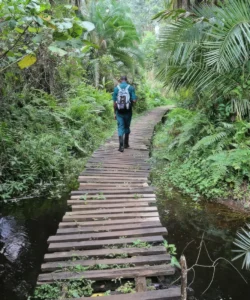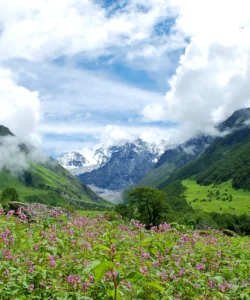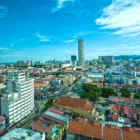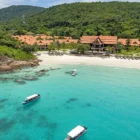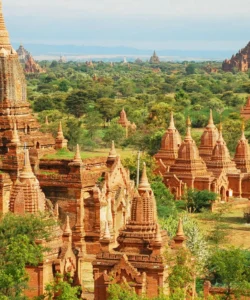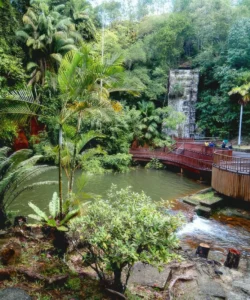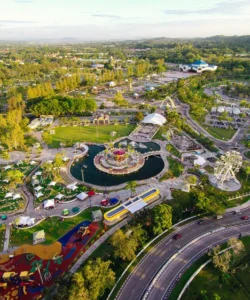The Malay Technology Museum offers a fascinating insight into the traditional technologies and ways of life of the indigenous Malay people of Brunei Darussalam. It’s particularly focused on the ingenuity of those living in the historic Kampong Ayer (Water Village).
Name: Malay Technology Museum (Malay: Muzium Teknologi Melayu)
Address: Simpang 482, Jalan Kota Batu, Bandar Seri Begawan, Brunei Darussalam. It is located in the Kota Batu area, near the Brunei River and close to other historical landmarks and museums like the Brunei Museum and the Brunei Darussalam Maritime Museum.
How to Get There:
The Malay Technology Museum is easily accessible from Bandar Seri Begawan city center.
- By Air: The closest airport is Brunei International Airport (BWN). From the airport, it’s a short 10-15 minute taxi or ride-sharing (Dart) trip to the museum.
- By Taxi/Ride-Sharing (Dart): Taxis and Brunei’s local ride-sharing service, “Dart,” are readily available throughout Bandar Seri Begawan for direct transfers.
- By Bus: Public bus route 39 from Bandar Seri Begawan Bus Terminal goes directly to the Malay Technology Museum. The journey takes approximately 8-17 minutes.
- By Foot: While technically walkable from the city center (around 7 km), it’s a long walk (over an hour) and not generally recommended due to distance and heat.
- Organized Tours: Many city tours in Brunei include a stop at the Malay Technology Museum, often combined with a visit to Kampong Ayer due to the museum’s focus on water village life.
- Entrance Fee: Admission to the museum is typically free. Visitors are usually allowed to keep their shoes on, which is a notable difference from some other museums in Brunei. Photography is generally permitted.
Landscape and Architecture:
The Malay Technology Museum’s architecture is a modern, purpose-built structure designed to house and showcase traditional technologies, rather than being an ancient or ornate building itself.
- Modern Building: The museum building itself is a contemporary structure, reportedly donated by the Royal Dutch Shell Group of Companies and opened in 1988. It’s designed to be functional, spacious, and well-suited for its exhibition purposes.
- Natural Surroundings: It is situated on the river delta and slopes of the Brunei River, in an area that includes green spaces. Its location in Kota Batu also places it near other historical sites and museums, forming a cultural cluster.
- Exhibition Halls Featuring Replicas: The interior architecture is designed to facilitate its displays, which prominently feature life-sized models and dioramas of traditional houses and technologies. The museum has three main galleries:
- Water Village Traditional House Gallery (Hall 1): Showcases architectural styles of traditional houses from Kampong Ayer (the Water Village) from the late 19th to early 20th centuries. This includes model houses made from traditional materials like daun apong (nipa palm leaves), kajang, and bamboo, representing different socioeconomic ranks (e.g., Rumah Belah Bubung, Rumah Tungkup).
- Water Village Traditional Technology Gallery (Hall 2): Focuses on various handicrafts and industries practiced in the water town, such as textile weaving, gold and silversmithing, boat building, and roof construction. It displays traditional tools and equipment.
- Inland Traditional Technology Gallery (Hall 3): Features native technology from inland communities, including tools for making ambulong (sago flour), tapa garut (tapioca starch), and gulanau (sugar cane pressing apparatuses). It also includes replicas of traditional houses from various indigenous ethnic groups like the Kedayan, Dusun, and Murut.
- Interactive Elements: The museum aims to provide insights into how local industries influenced Brunei’s development, often through informative displays and some interactive elements.
What Makes It Famous:
- Focus on Traditional Malay Technology: The museum’s primary fame comes from its unique and dedicated focus on the traditional technologies and industries of the Malay people in Brunei, particularly highlighting their ingenuity in adapting to life in the Kampong Ayer (Water Village) and inland areas.
- Insight into Kampong Ayer Life: It provides an excellent and in-depth look into the historical and cultural aspects of life in Kampong Ayer, complementing a physical visit to the water village with detailed explanations of boat building, fishing techniques, and house construction.
- Dioramas and Replicas: The life-sized models and realistic dioramas of traditional houses and industries make the exhibits highly engaging and easy to visualize, bringing the past to life.
- Cultural and Historical Documentation: It serves as a vital repository of cultural tools and practices that are now largely antiquated, documenting the resourcefulness and traditional knowledge of Bruneians.
- Educational Resource: It is a valuable educational spot for anyone interested in the history of Brunei, traditional industries, and the socio-cultural development of the country’s indigenous communities.
- Free Admission: Its free entry makes it an accessible and attractive cultural destination for all visitors.
Differences from Some Other Wonders:
- Specialized Thematic Focus: Unlike the Royal Regalia Museum (focused on royal artifacts) or a broader national museum (like the National Museum of Singapore, which covers broader national history), the Malay Technology Museum has a highly specific focus on traditional technology and daily life of the Malay people and indigenous communities, making it a niche cultural experience.
- Emphasis on “How Things Were Made”: While other museums might display artifacts, this museum delves into the process and ingenuity behind the creation of objects and the methods of livelihood, showcasing the “technology” aspect of traditional life.
- Extensive Use of Replicas/Dioramas: While some museums use dioramas, the Malay Technology Museum relies heavily on life-sized models and detailed replicas of houses and workshops to demonstrate traditional technologies, creating an immersive, almost walk-through experience of historical living conditions.
- Complementary to Kampong Ayer: It serves as an excellent complement to a visit to Kampong Ayer (the Water Village), providing historical context and deeper understanding of the traditional aspects of life there, which might not be immediately apparent from a simple boat tour of the active village.
- Less Focus on Grand Artifacts: Unlike museums that display opulent royal regalia or ancient archaeological finds (like the Royal Regalia Museum or the Islamic Arts Museum Malaysia), the Malay Technology Museum focuses on the everyday tools, crafts, and ingenious solutions used by common people, reflecting a more grounded and practical aspect of heritage.
- Modern, Functional Architecture: Its purpose-built, modern architecture is designed for effective display rather than being a historical or monumental structure itself, distinguishing it from the grandeur of palaces or older mosques.
Malay Technology Museum Photos:
